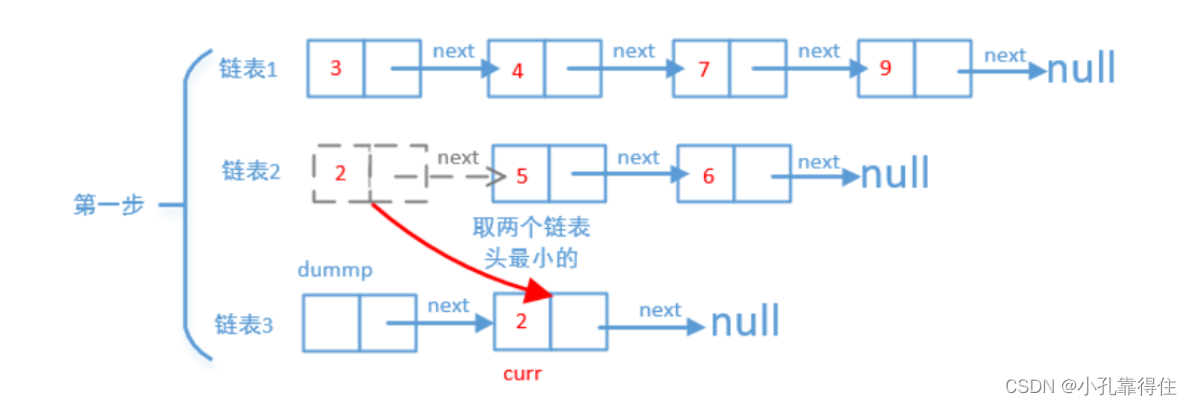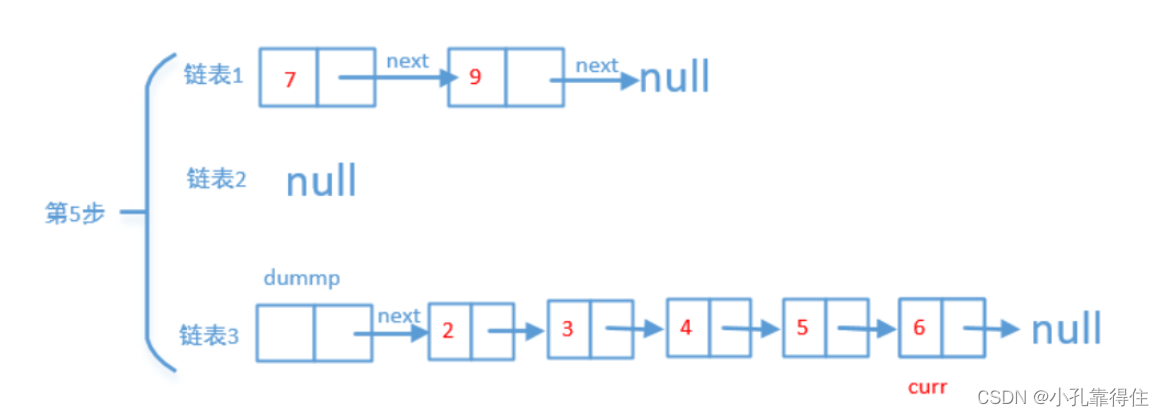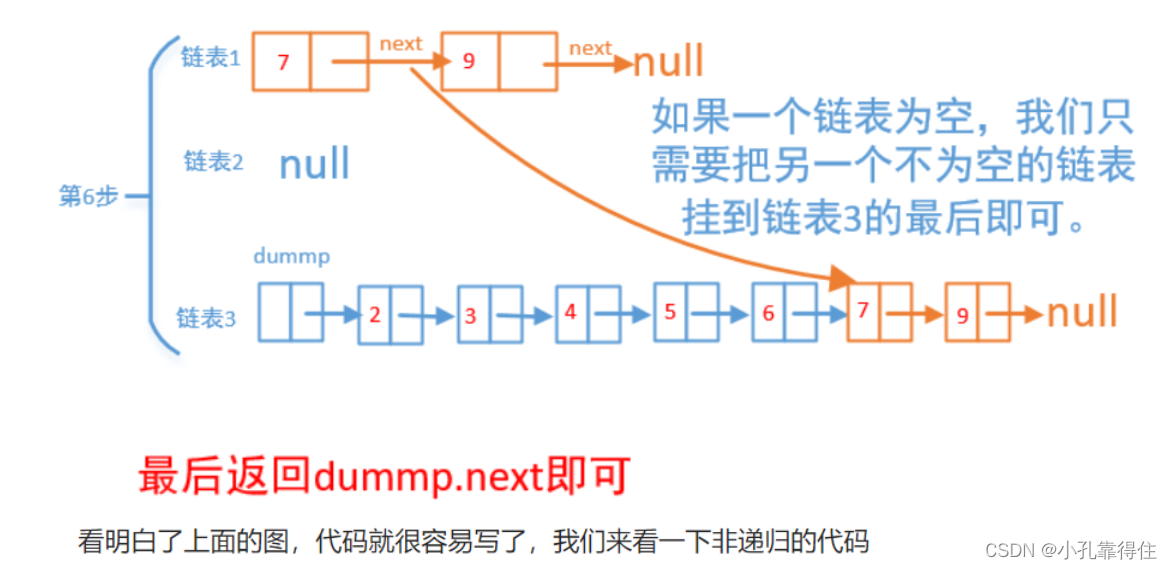将两个升序链表合并为一个新的 升序 链表并返回。新链表是通过拼接给定的两个链表的所有节点组成的。
示例 1:

输入:l1 = [1,2,4], l2 = [1,3,4]
输出:[1,1,2,3,4,4]
示例 2:
输入:l1 = [], l2 = []
输出:[]
示例 3:
输入:l1 = [], l2 = [0]
输出:[0]
提示:
- 两个链表的节点数目范围是 [0, 50]
- -100 <= Node.val <= 100
- l1 和 l2 均按 非递减顺序 排列
方法1:非递归法





public ListNode mergeTwoLists(ListNode linked1, ListNode linked2) {//下面4行是空判断if (linked1 == null)return linked2;if (linked2 == null)return linked1;ListNode dummy = new ListNode(0);ListNode curr = dummy;while (linked1 != null && linked2 != null) {//比较一下,哪个小就把哪个放到新的链表中if (linked1.val <= linked2.val) {curr.next = linked1;linked1 = linked1.next;} else {curr.next = linked2;linked2 = linked2.next;}curr = curr.next;}//然后把那个不为空的链表挂到新的链表中curr.next = linked1 == null ? linked2 : linked1;return dummy.next;}
方法2:递归法(原理和方法1一样)
public ListNode mergeTwoLists(ListNode linked1, ListNode linked2) {if (linked1 == null)return linked2;if (linked2 == null)return linked1;if (linked1.val < linked2.val) {linked1.next = mergeTwoLists(linked1.next, linked2);return linked1;} else {linked2.next = mergeTwoLists(linked1, linked2.next);return linked2;}}
//递归时,linked1.val < linked2.val,链表存在linked1;linked1.val >=linked2.val, 链表存在linked2













![[网鼎杯2018]Unfinish 两种方法 -----不会编程的崽](http://pic.xiahunao.cn/[网鼎杯2018]Unfinish 两种方法 -----不会编程的崽)




)
